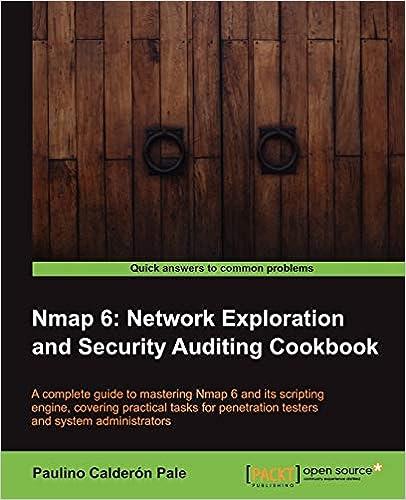Answered step by step
Verified Expert Solution
Question
1 Approved Answer
Fill in the blanks with the appropriate account name and amount. DR(S) should always be first, sorted alphabetically if there are multiple debits. Then CR(S),



Fill in the blanks with the appropriate account name and amount. DR(S) should always be first, sorted alphabetically if there are multiple debits. Then CR(S), likewise sorted alphabetically if there are multiple credits. The account name must come from the provided list and must be spelled abbreviated exactly the same. There must be exactly 1 space between the account name and the amount. The amount must not include a decimal or a S sign (all answers should be rounded to the nearest whole dollar) For example if the correct answer is Accounts Receivable for 40,000 00 it must be written as A/R 40000 or AVR 40,000 to be counted correct. Accts Rec. $40,000.00 will be counted incorrect. If no entry is needed, you must type "No Entry" in all blanks for that event No blanks should be left empty Account List Must March Exactly Chart of Accounts Full Account Name (DO NOT USE) Abbreviated Account Name (USE!) Cash Cash Accounts Receivable A/R Allowance for Doubtful Accounts ADA Accounts Payable Interest Expense Intep Interest Payable int-Pay Bad Debt Expense BDE Notes Dayable Prepaid Rent Rent Expense Rent-Exp Uneared Revenue Un-Rey Notes Receivable premom on Nets Receivable Drem.NIR Discount on test Recette Interest Revenue Ins. Res cost of Good Sold Purch Los on Inventory LCM ASUS Gecer en el ajustment Advance to Reduce thene Market and ACM The following inventory information applies to Jos Thompson Inc (JTI). JTI uses the Loss method of recording lower of cost or market (LCM) inventory adjustments. JTI uses the individual item method for evaluating LCM adjustments. They also use an allowance account rather than directly recording changes to inventory. Assume only 1 unit of inventory per item. Net Realizable Value less normal Replacement Net Realizable Profit Margin Cost Cost Value (Ceiling) (Floor) 50 45 B 60 75 100 95 80 150 75 Item A 60 30 SO What is the appropriate market value to use for each of the three items? Item Market Value (NOT LCM) A B Determine the Lower of Cost or Market (LCM) for each item 7 Item Lower of Cost or Market (LCM) A B The following are two independent situations. Both situations utilize the Lower of Cost or Market Calculation that you just performed. The only thing being manipulated is the unadjusted balance of the Allowance account Situation 1. Based on your above LCM Calculation, what is the appropriate adjusting journal entry if the unadjusted balance of the Allowance to Reduce Inventory to Market account is zero DR CR Situation 2. Based on your above LCM Calculation, what is the appropriate adjusting journal entry if the unadjusted balance of the Allowance lo Reduce Inventory to Market account is 30 DR CR Fill in the blanks with the appropriate account name and amount. DR(S) should always be first, sorted alphabetically if there are multiple debits. Then CR(S), likewise sorted alphabetically if there are multiple credits. The account name must come from the provided list and must be spelled abbreviated exactly the same. There must be exactly 1 space between the account name and the amount. The amount must not include a decimal or a S sign (all answers should be rounded to the nearest whole dollar) For example if the correct answer is Accounts Receivable for 40,000 00 it must be written as A/R 40000 or AVR 40,000 to be counted correct. Accts Rec. $40,000.00 will be counted incorrect. If no entry is needed, you must type "No Entry" in all blanks for that event No blanks should be left empty Account List Must March Exactly Chart of Accounts Full Account Name (DO NOT USE) Abbreviated Account Name (USE!) Cash Cash Accounts Receivable A/R Allowance for Doubtful Accounts ADA Accounts Payable Interest Expense Intep Interest Payable int-Pay Bad Debt Expense BDE Notes Dayable Prepaid Rent Rent Expense Rent-Exp Uneared Revenue Un-Rey Notes Receivable premom on Nets Receivable Drem.NIR Discount on test Recette Interest Revenue Ins. Res cost of Good Sold Purch Los on Inventory LCM ASUS Gecer en el ajustment Advance to Reduce thene Market and ACM The following inventory information applies to Jos Thompson Inc (JTI). JTI uses the Loss method of recording lower of cost or market (LCM) inventory adjustments. JTI uses the individual item method for evaluating LCM adjustments. They also use an allowance account rather than directly recording changes to inventory. Assume only 1 unit of inventory per item. Net Realizable Value less normal Replacement Net Realizable Profit Margin Cost Cost Value (Ceiling) (Floor) 50 45 B 60 75 100 95 80 150 75 Item A 60 30 SO What is the appropriate market value to use for each of the three items? Item Market Value (NOT LCM) A B Determine the Lower of Cost or Market (LCM) for each item 7 Item Lower of Cost or Market (LCM) A B The following are two independent situations. Both situations utilize the Lower of Cost or Market Calculation that you just performed. The only thing being manipulated is the unadjusted balance of the Allowance account Situation 1. Based on your above LCM Calculation, what is the appropriate adjusting journal entry if the unadjusted balance of the Allowance to Reduce Inventory to Market account is zero DR CR Situation 2. Based on your above LCM Calculation, what is the appropriate adjusting journal entry if the unadjusted balance of the Allowance lo Reduce Inventory to Market account is 30 DR CR
Step by Step Solution
There are 3 Steps involved in it
Step: 1

Get Instant Access to Expert-Tailored Solutions
See step-by-step solutions with expert insights and AI powered tools for academic success
Step: 2

Step: 3

Ace Your Homework with AI
Get the answers you need in no time with our AI-driven, step-by-step assistance
Get Started


